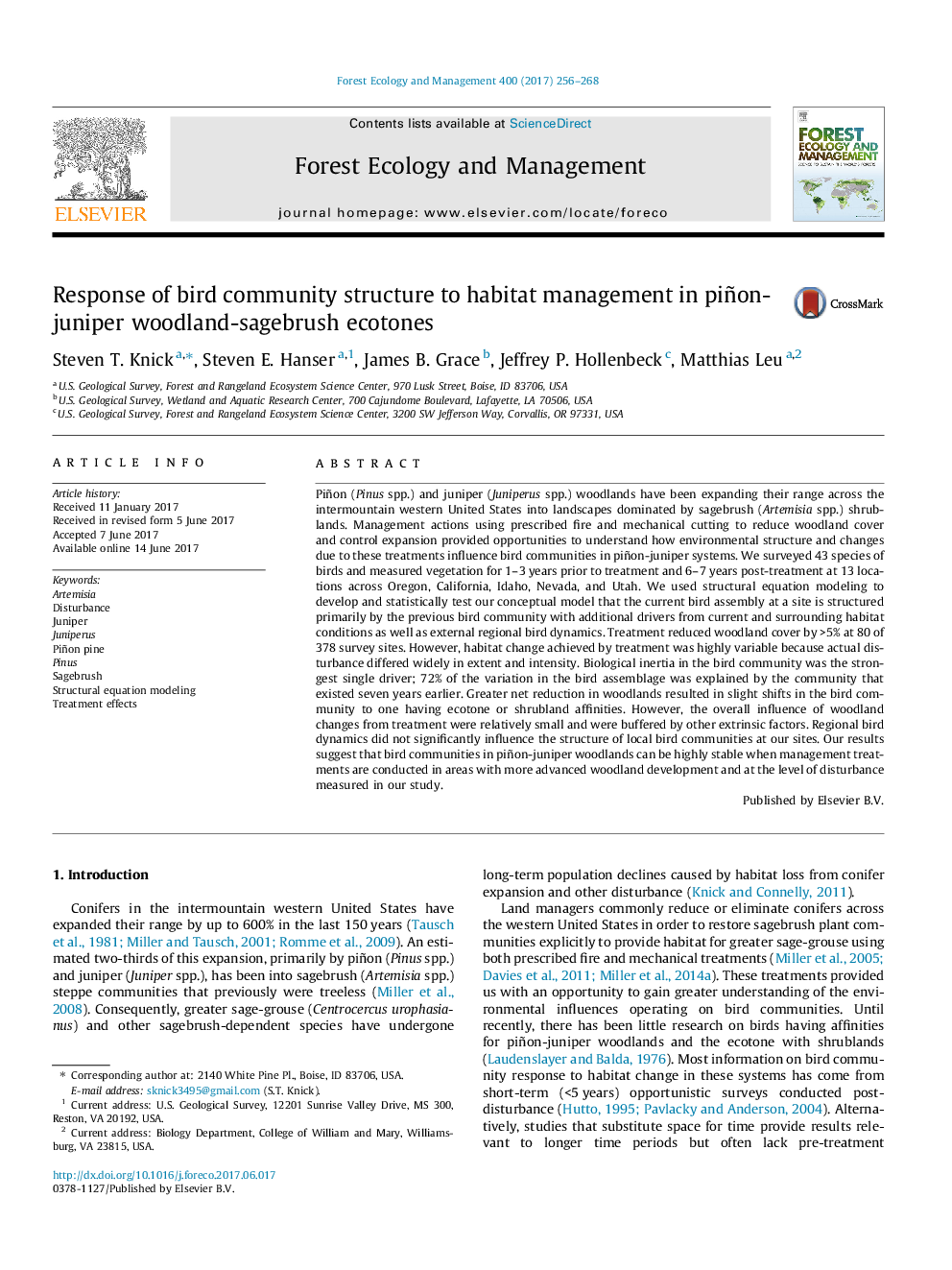| Article ID | Journal | Published Year | Pages | File Type |
|---|---|---|---|---|
| 6459243 | Forest Ecology and Management | 2017 | 13 Pages |
â¢The bird community from seven years earlier explained 72% of the current assemblage.â¢Treatment influence on bird communities was small and buffered by extrinsic factors.â¢Woodland reduction caused small shifts to ecotone or shrubland bird communities.â¢Regional bird dynamics did not influence local bird community structure.
Piñon (Pinus spp.) and juniper (Juniperus spp.) woodlands have been expanding their range across the intermountain western United States into landscapes dominated by sagebrush (Artemisia spp.) shrublands. Management actions using prescribed fire and mechanical cutting to reduce woodland cover and control expansion provided opportunities to understand how environmental structure and changes due to these treatments influence bird communities in piñon-juniper systems. We surveyed 43 species of birds and measured vegetation for 1-3Â years prior to treatment and 6-7Â years post-treatment at 13 locations across Oregon, California, Idaho, Nevada, and Utah. We used structural equation modeling to develop and statistically test our conceptual model that the current bird assembly at a site is structured primarily by the previous bird community with additional drivers from current and surrounding habitat conditions as well as external regional bird dynamics. Treatment reduced woodland cover by >5% at 80 of 378 survey sites. However, habitat change achieved by treatment was highly variable because actual disturbance differed widely in extent and intensity. Biological inertia in the bird community was the strongest single driver; 72% of the variation in the bird assemblage was explained by the community that existed seven years earlier. Greater net reduction in woodlands resulted in slight shifts in the bird community to one having ecotone or shrubland affinities. However, the overall influence of woodland changes from treatment were relatively small and were buffered by other extrinsic factors. Regional bird dynamics did not significantly influence the structure of local bird communities at our sites. Our results suggest that bird communities in piñon-juniper woodlands can be highly stable when management treatments are conducted in areas with more advanced woodland development and at the level of disturbance measured in our study.
